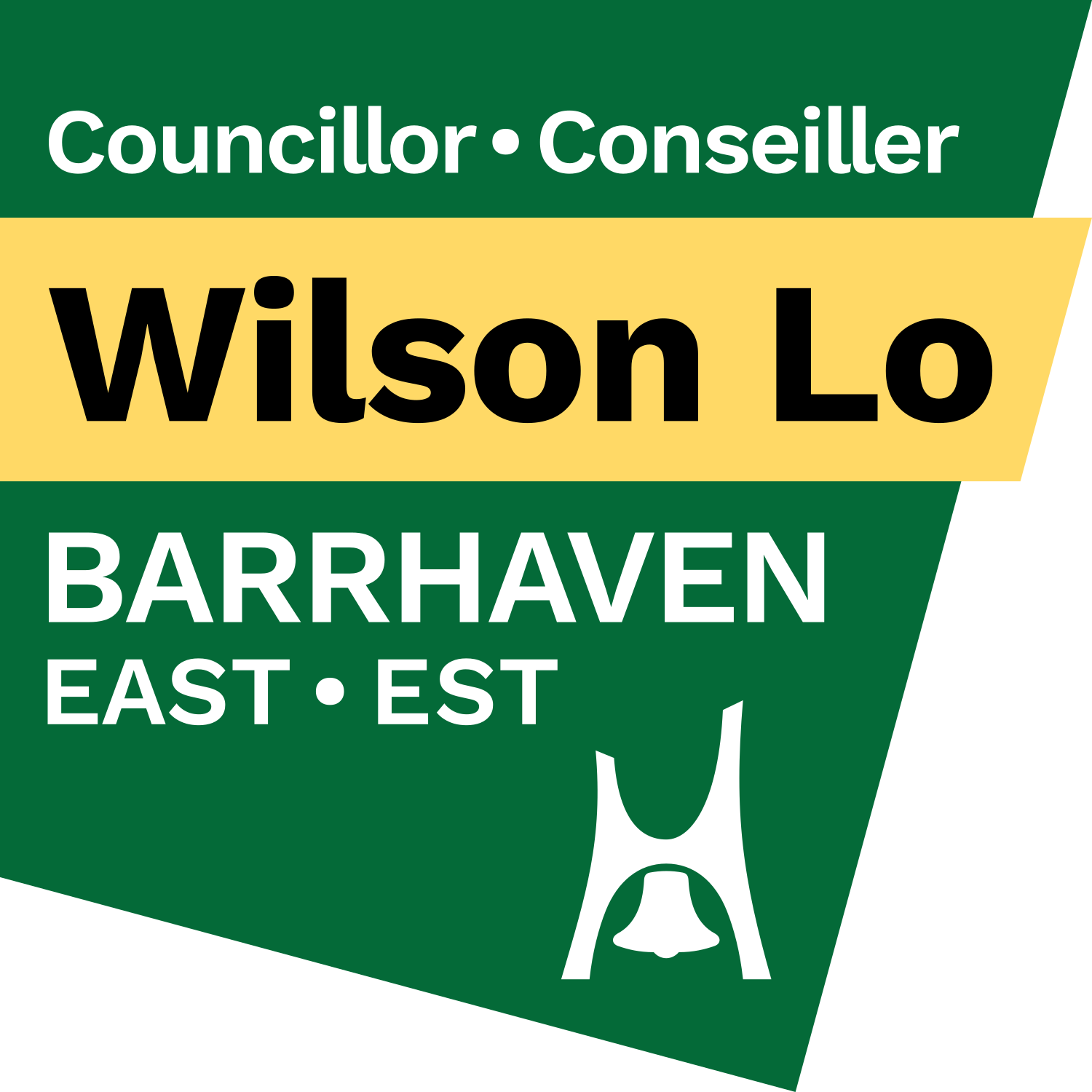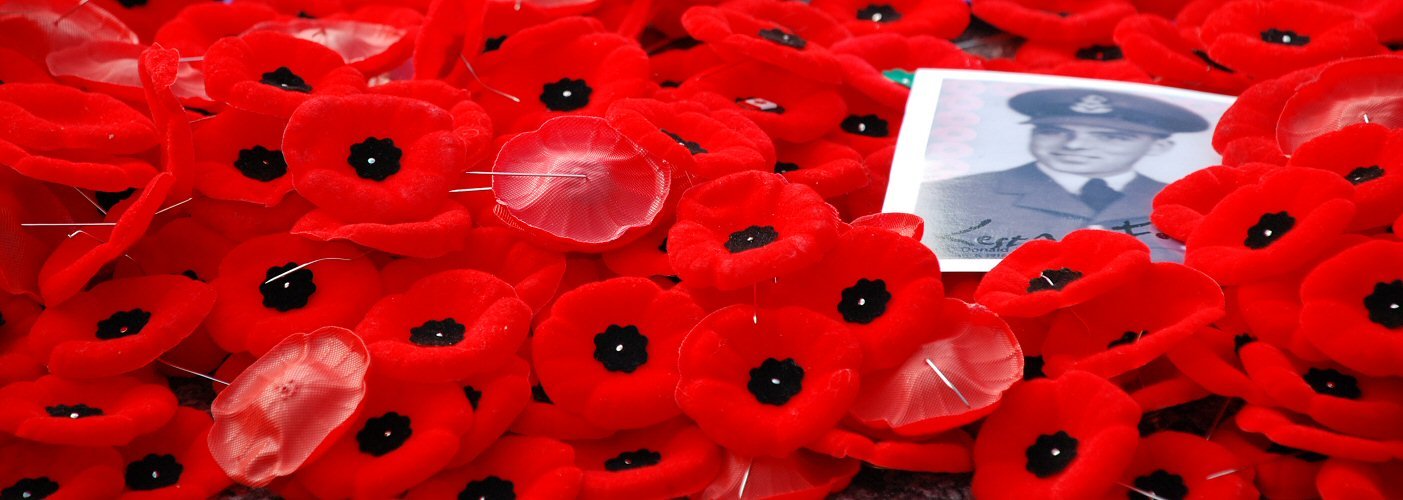Weekly newsletter: November 7, 2023
Hi everyone!
Some quick reminders before the substantial portion of this week’s newsletter:
Planned power outage on Cottingham Street from 8:00 am to 2:00 pm on Thursday 9, November 9th to facilitate Hydro Ottawa work
Garbage/blue/green bin collection next week will NOT be delayed to Wednesday despite the Monday replacement holiday (Remembrance Day is a Saturday)
Thanks for reading and enjoy your week ahead.
Remembrance Day
Residents are invited to attend the Barrhaven Remembrance Day ceremony, taking place outside John McCrae Secondary School on Saturday, November 11th at 11:00 am. Please consider arriving by 10:45 am. Parking is available at Walter Baker.
While Canada’s contributions in wartime Europe, Korea, Bosnia, Afghanistan, and to peacekeeping are far greater and receive more widespread recognition and education, I often focus on our involvement in a place closer to my heart — Hong Kong.
In late-1941, Canada sent 1,975 soldiers from the Royal Rifles of Canada (Québec) and the Winnipeg Grenadiers (Manitoba) to reinforce Britain’s Hong Kong garrison. The soldiers had little field experience and lacked vehicles and major weapons.
The intention was to fully supply, train, and prepare the soldiers for active defence after they arrived in November 1941, but just three weeks later, on December 8. 1941, the Japanese, who already occupied surrounding Chinese territories, invaded.
Allied forces, mostly Canadian, British, Indian, and locals, were to hold the mainland portion of Hong Kong for three weeks until reinforcements from Singapore could arrive. Fighting an experienced invading force four times its size, they were quickly overwhelmed and retreated to Hong Kong Island by December 13.
Two weeks later, Hong Kong fell with Governor Mark Young’s formal surrender on Christmas Day 1941. Thus began three years and eight months of Japanese occupation lasting until Japan’s surrender in August 1945.
Anecdotal and confirmed accounts of the occupation, known locally as the “Three Years and Eight Months,” told countless stories of the brutality of Hong Kong under Japanese rule.
People lived in constant fear, were subject to rations, abuse, and forced deportations to an unknown fate by the Japanese authorities.
My grandmother was just an infant when the occupation began, but her family has shared stories which have been shared with me sparingly. Stories like her father having his legs broken for delivering flyers to a wrong address and having to beg a Japanese soldier to spare the life of her younger sister (an infant near the end of the occupation).
We’ll probably never know all the stories internalised by those not willing to relive their experiences.
An estimated 10,000 Hongkongers were executed with countless more tortured, raped, or mutilated by the Japanese during their invasion. The colony’s population fell from 1.6 million in 1941 to 600,000 when the British retook possession of Hong Kong in 1945.
Allied soldiers faced similar cruelty during the invasion and following the surrender.
Massacres, war crimes, and crimes against humanity, including several accounts of wounded soldiers being bayoneted, soldiers killed after surrendering, and the storming of a field hospital were recorded.
While this is certainly a story of the Japanese invasion and occupation of Hong Kong, it is also the story of what Canada and its allies fought against.
When we’re told “they fought for our freedom,” what that freedom is sometimes gets lost, but one only needs to skim the surface of recent human history to remember the peacetime comforts in Canada aren’t guaranteed.
Take a moment on Remembrance Day to pause and commemorate the courage and sacrifice of soldiers past and present. We are here because they fought there.
Canada lost 290 soldiers with 493 injured defending Hong Kong during the invasion. Another 267 died from abuse, disease, hard labour, and neglect in captivity.
Two hundred twenty-eight Canadian soldiers are interred at Sai Wan War Cemetery in Hong Kong, a site maintained by the Commonwealth War Graves Commission.
Japan formally apologised in 2011 for its treatment of Canadian soldiers and POWs.
Lest We Forget.
Sewer cleaning
The City of Ottawa routinely cleans sewer infrastructure to ensure wastewater from homes and businesses is transported efficiently to the treatment plant (known as ROPEC, the Robert O. Pickard Environmental Centre).
Sewer cleaning began earlier this week and will continue until the end of the month on every street bounded by Greenbank, the Via Rail tracks, Fallowfield, Woodroffe, and Strandherd. All work will take place between 7:00 am and 5:00 pm on weekdays, with crews spending about an hour per location.
High pressure water used during the cleaning process creates air pockets that usually escape with no impact to internal property plumbing. In some cases, the air pockets escape through the connection between the city sewer system and private plumbing through an internal plumbing vent.
If that vent is blocked, the air would escape through a drain or toilet, creating blow back, which is normally just air with odours, but on very rare occasions can include sewage-contaminated water.
If you experience blow back, call 3-1-1 for an assessment of the issue. In some cases, staff may be dispatched to your home.
The City does not provide a cleaning service, but will reimburse your cleaning costs if the situation has been reported to 3-1-1 before proceeding with hiring a cleaning service.
Properties that have experienced blow back in the past will receive a notice 24 to 48 hours before work begins near them.
OC Transpo bus route review – overview
Late last week, OC Transpo released the results of their route review/service realignment.
The process began shortly after the current term of Council started and aims to realign bus resources to better match travel patterns that have shifted over the last few years, including demand for connections to local employment/shopping hubs, to Carleton University, and improve connections between Barrhaven East and West.
The proposed changes will redistribute service from routes/corridors that can no longer support the current level of service economically. The proposed changes are not final and will take effect in spring or summer of 2024, shortly after O-Train Line 2 opens.
A significant amount of service is proposed to be reoriented east to Limebank Station to connect with future Line 2 services which connects to South Keys, Carleton, Dow's Lake, and Bayview, plus downtown and uOttawa by changing trains at Bayview Station. Most notably, routes 270, 271, 272, 273, and 278 will be cancelled and replaced with all-day, bidirectional service to other hubs.
Aside from public-facing changes, OC Transpo are also improving a number of internal practices to improve bus reliability, including reducing interlining on major routes and continuing the aggressive operator and mechanic hiring campaigns.
However, our recent reputation means I understand the cynicism, unease, and uncertainty the news has brought.
Generally, I believe this trends in a good direction to improving connectivity while balancing the financial pressures of having done nothing for the last three years and being delicate about fares and property taxes.
Councillor Hill and I are taking a whole-of-Barrhaven approach to these changes. A few gaps have been identified by residents and by our offices so far, and we will be working with OC Transpo to resolve them before the changes take effect in the spring or summer of 2024, including:
A lack of daytime service west of Woodroffe, north of Longfields (including at Saint Mother Teresa High School)
Poor connections to Baseline Station/Algonquin College
No connection between communities in Old Barrhaven and Marketplace, and
The likely need to retain some express services to Tunney’s Pasture until Line 1 opens at Baseline Station
Beyond service coverage and where routes will go, details about frequency and span of service are not yet available, but Councillor Hill and I will be making a concerted push for better frequency, especially during peak hours to avoid a repeat of Tunney’s Pasture.
Please note school services are separate from the review package, as they are designed in consultation with the school board and OSTA.
We are currently organising a transit virtual town hall for the end of November to solicit more fulsome community feedback to guide our discussions with staff. Stay tuned for more details.
Next week’s newsletter will provide a more in-depth look at the new routes and replacement services for the cancelled 270-series routes (except the 277) as part of the proposed changes.




